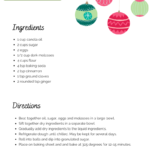Today I am sharing the exercise experiences of two people with diabetes as examples of what exercise can and cannot do when you have diabetes. Both used physical activity as a tool to bring their glucose into target but each had a different result.
It is a reminder that diabetes is unique in its effect on each individual.
 First let me introduce you to Evelyn. She had a long history living with diabetes. She maintained regular checkups with her doctor and at each visit was told to lose weight and exercise. She didn’t have a plan for losing weight, and frankly, she was satisfied with her current weight.
First let me introduce you to Evelyn. She had a long history living with diabetes. She maintained regular checkups with her doctor and at each visit was told to lose weight and exercise. She didn’t have a plan for losing weight, and frankly, she was satisfied with her current weight.
Evelyn’s diet and portion control was reasonable and she usually could stay away from sweets. Sure, it would be nice to be smaller, but that seemed like too much work. She decided not to make any changes. Evelyn loved to read and crochet and relax inside. She did not like to move and ignored the advice to walk.
As the years passed she increased her medication to keep her glucose in target. Finally, she was taking three different diabetes medications at the maximum dose recommended and her A1C was still above 8.0. Because she was at risk of getting complications with at that glucose level her doctor told her she needed to start insulin.
“No! Please doctor, let me try walking! Please!“ Of course, he had wanted her to walk for years. Suddenly she was motivated. She was afraid of insulin and was now willing to do anything to avoid it, even walk. He agreed she could try for one month. With this new found motivation, she decided she would walk for 10 minutes after each meal. She could do anything for 10 minutes. She didn’t like it but the walking reduced her blood sugar levels.
She was able to put off taking insulin.
On the flip side is George’s story. George also had diabetes for many years and was taking three different diabetes pills. He was at a healthy weight and followed his meal plan closely . On top of that George was doing two hours of physical activity every day. He walked every morning for an hour and went swimming every afternoon. Despite this effort his glucose level was never below 200 and his A1C was close to 10. He was so frustrated that no matter what he did his blood sugar was still too high. How could this be? (Can you figure out his problem?).
Despite George having an active healthy lifestyle his glucose was elevated because his body simply no longer made enough insulin. His pills, exercise and healthy eating were not enough to bring his glucose into target. He needed insulin. Insulin works by allowing the body’s cells to open up and accept glucose from the blood. He was happy to take insulin! He was able to lower his glucose and have more energy.
So here’s what exercise can’t do — It can’t make you make more insulin.
It is normal and common to make less insulin over time if you have diabetes. Through no fault of his own, George had reached the point that he needed to inject insulin. It was the tool that was missing. With it he was able to bring his A1C down to 7.0.
However, here’s what exercise can do –
It can help your body use the insulin you have more efficiently. Evelyn made enough of her own insulin but she needed to walk to help her cells to respond to the insulin and open up. Her glucose came down because she began walking 30 minutes a day, broken down in three 10 minute sessions.
The moral of the story is simple, exercise is important, but is only one component of managing your diabetes.
The overall benefits of exercise are many and well documented.
For some, the benefits of exercise are almost miraculous. Try different things and find something you enjoy. Walking, yoga, playing any active game, tai chi, the list goes on.
Find your exercise muse and stick with it. If your blood sugars or A1C stay elevated be sure to advocate for yourself and talk to your healthcare provider about changing your treatment plan. If you need insulin, take it. Know that having to take insulin is not due to any fault…it is simply a manifestation of a very complex disease. Understand that insulin is a great tool for replacing the hormone that you no longer make.
To see how physical activity affects your blood sugar try monitoring right before and after exercise to see what happens.






Leave a Reply